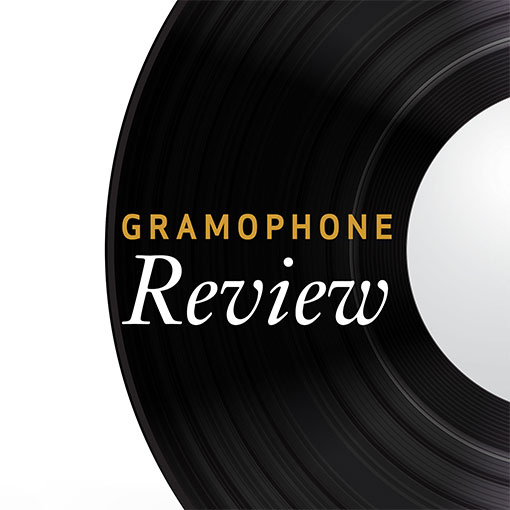Brahms String Sextets Nos 1 and 2
View record and artist detailsRecord and Artist Details
Composer or Director: Johannes Brahms
Label: Vivarte
Magazine Review Date: 12/1996
Media Format: CD or Download
Media Runtime: 70
Mastering:
DDD
Catalogue Number: SK68252

Tracks:
| Composition | Artist Credit |
|---|---|
| String Sextet No. 1 |
Johannes Brahms, Composer
Archibudelli Johannes Brahms, Composer |
| String Sextet No. 2 |
Johannes Brahms, Composer
Archibudelli Johannes Brahms, Composer |
Author:
The first time I played these performances, I rather disliked them. The second time, they made more sense and now I find myself returning to them purely for pleasure (the ultimate fate of any CD programme that works effectively). Initial reactions are easy to explain. L’Archibudelli use gut strings, which tend to project less prominently than their steel or steel-and-nylon replacements, though the actual quality of the sound – realized via six superb instruments dating from between 1670 and 1947 – is rich in varied nuances. Also, the actual style of playing has more than a whiff of period performance about it, with sparing vibrato, attenuated phrases, rough-cut tuttis and a studied avoidance of anything vaguely resembling ‘sentimentality’. Cellist Kenneth Slowik reveals all in an unusually penetrating essay that quotes Brahms’s biographer Max Kalbeck. “No romantic fog hangs over the [First] Sextet,” writes Kalbeck, “and no shimmering moonlight obliterates its contours. No, it is as clear as a brightly-lit day … The melodies sound as if they were being sung by a healthy, well-rested voice”. “Well-rested” might here be interpreted as ‘relaxed’ and in marked contrast to the vibrantly intense readings of, say, Casals and his colleagues in the First Sextet and Heifetz and his in the Second.
Slowik goes on to quote Brahms’s description of the Second Sextet as having “the same jovial character” as the First and Tovey’s of the same work being “the most ethereal of Brahms’s larger works”. L’Archibudelli’s approach illuminates Brahms’s baroque antecedents, so much so that I occasionally imagined myself listening to early music that anticipates the romantics rather than a romantic who was fond of ancient modes. The First’s noble second movement really does sound like a chaconne, but when we reach the glorious ‘trio’ at 4'31'', how I longed for sunnier climes (Stern – either with Casals or Ma – takes us there in an instant). The Scherzo is suitably rustic-sounding, the finale chaste but energetic.
Most remarkable is the Second Sextet’s gently pulsing Allegro non troppo, where top line and accompaniment meet virtually on equal terms. The Scherzo opens to an unusually swift Allegro non troppo, so that the switch to Presto giocoso (and then back to the initial tempo) is less dramatic than on most rival performances (Heifetz’s most especially). Then again, the Adagio’s wilting first bars are beautifully voiced (Tovey’s “ethereal” reference springs immediately to mind) and the closing Poco allegro has considerable charm.
Studied in isolation, these performances will probably influence the way you hear both works: they’re certainly compelling, if less than comprehensive. What I miss most is the metaphorical hand on heart, evidence of those warming intimacies and quiet confessions in which Brahms’s Sextets abound (and that Stern and Heifetz nurture). Call that sentimental? No. Call it ‘feeling’? Certainly. L’Archibudelli tell us a great deal, but what they offer are more colourful potted plants than lovingly tended gardens.'
Slowik goes on to quote Brahms’s description of the Second Sextet as having “the same jovial character” as the First and Tovey’s of the same work being “the most ethereal of Brahms’s larger works”. L’Archibudelli’s approach illuminates Brahms’s baroque antecedents, so much so that I occasionally imagined myself listening to early music that anticipates the romantics rather than a romantic who was fond of ancient modes. The First’s noble second movement really does sound like a chaconne, but when we reach the glorious ‘trio’ at 4'31'', how I longed for sunnier climes (Stern – either with Casals or Ma – takes us there in an instant). The Scherzo is suitably rustic-sounding, the finale chaste but energetic.
Most remarkable is the Second Sextet’s gently pulsing Allegro non troppo, where top line and accompaniment meet virtually on equal terms. The Scherzo opens to an unusually swift Allegro non troppo, so that the switch to Presto giocoso (and then back to the initial tempo) is less dramatic than on most rival performances (Heifetz’s most especially). Then again, the Adagio’s wilting first bars are beautifully voiced (Tovey’s “ethereal” reference springs immediately to mind) and the closing Poco allegro has considerable charm.
Studied in isolation, these performances will probably influence the way you hear both works: they’re certainly compelling, if less than comprehensive. What I miss most is the metaphorical hand on heart, evidence of those warming intimacies and quiet confessions in which Brahms’s Sextets abound (and that Stern and Heifetz nurture). Call that sentimental? No. Call it ‘feeling’? Certainly. L’Archibudelli tell us a great deal, but what they offer are more colourful potted plants than lovingly tended gardens.'
Discover the world's largest classical music catalogue with Presto Music.

Gramophone Digital Club
- Digital Edition
- Digital Archive
- Reviews Database
- Full website access
From £8.75 / month
Subscribe
Gramophone Full Club
- Print Edition
- Digital Edition
- Digital Archive
- Reviews Database
- Full website access
From £11.00 / month
Subscribe
If you are a library, university or other organisation that would be interested in an institutional subscription to Gramophone please click here for further information.





